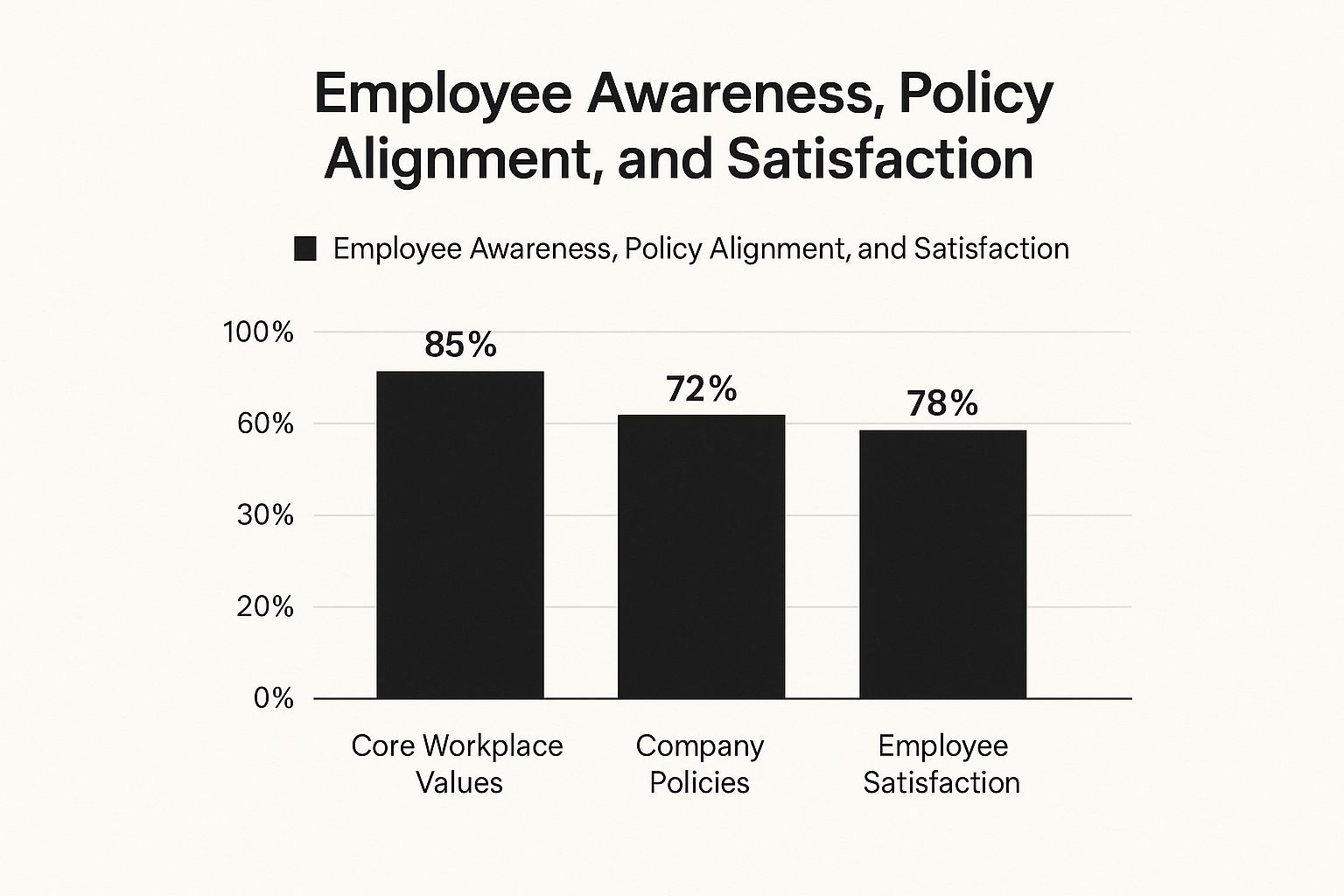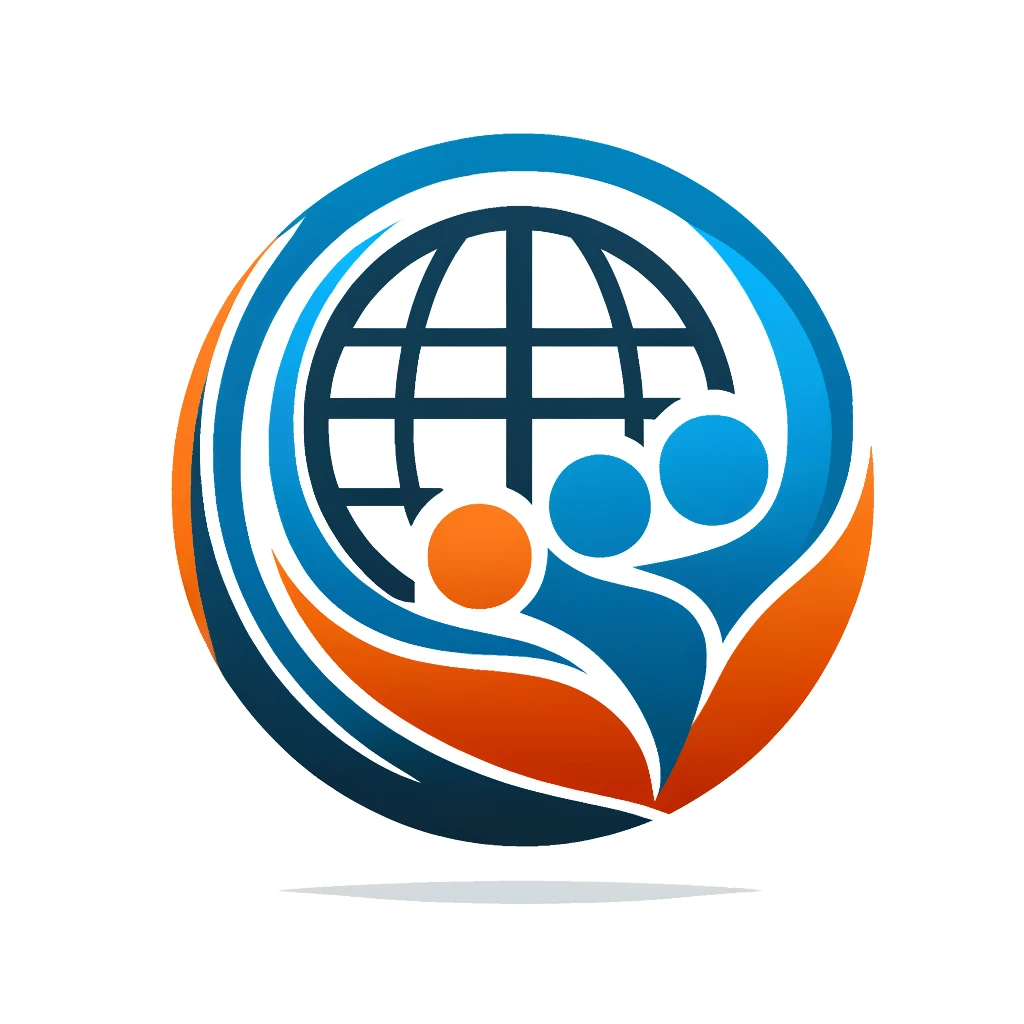The Real Impact of Workplace Culture

A strong workplace culture is the bedrock of any successful organization, connecting everyday tasks to overarching strategic objectives. Think of teams with shared values: they often navigate disagreements more swiftly, minimizing project delays. A healthy culture also empowers employees to share their insights, fostering a breeding ground for innovative solutions. This intricate connection reveals how culture shapes performance at every level, from individual contributions to company-wide endeavors. Over time, these cultural investments create a unique competitive advantage that’s difficult for competitors to emulate.
Measurable Business Outcomes
Organizations that invest in their culture see tangible results, such as increased profitability, faster innovation, and stronger customer loyalty. A thriving culture is like a well-oiled machine: when all parts are aligned, the system hums. Internal data highlights the impact:
| Outcome | High-Impact Culture | Low-Impact Culture |
|---|---|---|
| Employee Retention | 89% | 54% |
| Innovation Index | 7.8 | 4.2 |
| Productivity Growth | 12% | 3% |
This data reveals the power of cultural shifts. Notice how even small changes can double innovation output and even triple productivity gains. This quantifiable edge creates a powerful competitive advantage in competitive markets, where every percentage point of increased productivity translates to bottom-line growth. Moreover, these improvements compound over time, making culture a scalable asset, not a recurring expense.
Generational Differences in Culture
Today’s workforce spans generations, each with its own set of values and expectations. By 2025, 88% of employees will value company culture, with 69% of Gen Z prioritizing it over salary. Discover more insights about company culture here. Younger generations often seek opportunities for growth and alignment with company values, while Baby Boomers might prioritize stability and defined career progression. Gen X, on the other hand, typically values autonomy and work-life balance. Acknowledging these nuances allows you to create cultural programs that resonate with everyone.
Key Cultural Drivers That Move Performance
Certain cultural elements consistently drive engagement and improve results. These include:
- Trust and Psychological Safety: This empowers teams to take risks without fear of negative repercussions.
- Clear Purpose: Aligns individual aspirations with the organization's mission.
- Open Communication: Keeps teams informed and fosters collaboration.
- Recognition and Feedback: Reinforces positive behaviors and encourages continuous growth.
When these elements are present, teams work together more effectively, and performance steadily climbs.
Common Pitfalls in Culture Initiatives
While cultural initiatives are essential, not all efforts are successful. Be mindful of these common pitfalls:
- Perks-focused programs without alignment with core values
- One-time events instead of ongoing, sustained practices
- Lack of transparent feedback mechanisms
- Overlooking cultural gaps in remote or hybrid work environments
- Relying solely on short-term surveys without follow-up actions
Failing to address these issues can lead to disengagement and wasted resources.
Understanding the real impact of workplace culture is the first step towards improvement. Explore practical strategies for building a positive work culture. In the next section, we’ll delve into an honest assessment of your current culture, highlighting strengths and identifying areas for meaningful change. Culture isn’t static; it’s a dynamic ecosystem that needs nurturing and attention. By appreciating its true power, you empower your organization to embrace change systematically, ensuring initiatives deliver lasting value.
Honest Assessment: Where Your Culture Stands Now
Embarking on a journey to a better workplace culture starts with understanding your current reality. This requires an honest assessment, one that reveals both the shining strengths and the areas ripe for growth. This isn't about pointing fingers, but about gaining a clear, objective view of your cultural landscape. This understanding will be the bedrock upon which you build meaningful and lasting change.
Gathering Honest Feedback: Creating Psychological Safety
To truly assess your culture, you need honest feedback. But honesty thrives in safety. Psychological safety is the key. When your team feels comfortable expressing their thoughts and concerns without fear of judgment or negative consequences, you'll receive genuine insights, not just surface-level platitudes. Cultivating this safety begins with open dialogue, active listening, and constructive responses to feedback. It's about creating a space where everyone's voice matters.
Practical Approaches to Data Collection
Gathering insightful data requires a multi-pronged strategy. Employee surveys offer a broad overview of sentiment, while focus groups allow for deeper dives into specific issues. One-on-one conversations create personalized opportunities for individuals to share their experiences in a more private setting. Weaving these methods together provides a rich tapestry of understanding, illuminating the nuances of your cultural landscape.
To illustrate the power of data-driven insights, let's consider the following table:
Workplace Culture Assessment Methods
Comparison of different approaches to evaluating workplace culture
| Assessment Method | Best For | Typical Insights | Implementation Difficulty | Cost |
|---|---|---|---|---|
| Employee Surveys | Gathering broad sentiment & identifying general trends | Overall satisfaction, areas of concern, perception of leadership | Easy to implement, can be challenging to design effective questions | Low to moderate |
| Focus Groups | Exploring specific issues in-depth & generating discussion | Detailed feedback on particular topics, diverse perspectives | Moderate implementation, requires skilled facilitation | Moderate |
| One-on-One Conversations | Understanding individual experiences & building rapport | Personalized insights, sensitive issues, deeper understanding of individual needs | Can be time-consuming, requires strong interpersonal skills | Moderate to high |
By carefully selecting and combining these methods, you can gain a truly comprehensive understanding of your workplace culture. This understanding empowers you to make targeted improvements that resonate with your team's unique needs.
The infographic below visualizes key data points gathered from a recent company-wide assessment: the percentage of employees aware of core workplace values, the percentage of company policies aligned with those values, and the overall employee satisfaction rating.

As the infographic reveals, while awareness of company values is high, there's a gap between those values and company policies, impacting employee satisfaction. Bridging this gap is key to elevating the cultural experience. Explore further ways to foster a supportive environment with these Workplace Wellness Program Ideas.
Identifying Warning Signs and Establishing Baseline Metrics
Early detection is crucial. Look for subtle signs like increased absenteeism, declining productivity, or rising interpersonal conflicts. These seemingly small ripples can indicate larger currents of discontent. Once you've identified these areas, establish baseline metrics to track progress. These metrics will be your compass, guiding you toward positive change and allowing you to measure the impact of your initiatives.
Building a Foundation for Positive Change
This honest assessment isn't just about finding problems; it's about understanding your starting point. By creating psychological safety, using diverse data collection methods, and establishing clear metrics, you build a solid foundation for a thriving culture. This foundation is your launchpad, propelling you toward a workplace where everyone feels valued, supported, and inspired to do their best work.
Building Trust Through Authentic Communication

Trust is the invisible glue that binds a thriving workplace culture. It's the bedrock of collaboration, innovation, and open communication. But this vital element is delicate, easily damaged by inconsistent actions and a lack of transparency. This section explores practical ways to nurture genuine trust through authentic communication, creating an environment of mutual respect and shared success within your workplace.
Transparency and Communication Frameworks
Building trust starts with transparency. Openly sharing information, both positive and negative, shows honesty and respect for your team. This doesn't require disclosing every single detail, but it does mean being upfront about decisions affecting employees. This honesty cultivates a sense of shared purpose and minimizes anxiety stemming from uncertainty.
Establishing clear communication frameworks, like regular updates and dedicated feedback channels, provides predictable and reliable pathways for information. This structure helps everyone stay informed and feel valued.
Psychological Safety: The Power of Vulnerability
Leaders are key to shaping workplace trust. By demonstrating vulnerability, leaders create psychological safety, empowering team members to express themselves without fear of negative consequences. This involves admitting mistakes, acknowledging limitations, and being receptive to feedback.
When leaders embrace vulnerability, they show others it's acceptable to do the same. This builds an environment where employees feel comfortable taking calculated risks, sharing innovative ideas, and offering constructive criticism.
For example, picture a team leader openly sharing a project setback with their team, explaining what happened and the lessons learned. This vulnerability not only builds trust but creates a learning experience for everyone. It's crucial to remember that vulnerability isn't weakness; it's authenticity. Strong leaders comfortably show their human side without diminishing their authority.
Trust is also paramount regarding growth. A significant 40% of employees would consider leaving a company that doesn't offer upskilling or reskilling opportunities. Explore this topic further. This underscores the importance of not only providing these opportunities, but communicating their availability and value clearly.
Consistent Communication Practices: Reinforcing Cultural Values
Communication isn't just about relaying information; it's about reinforcing your organization's values. Consistent messaging, internally and externally, ensures everyone is on the same page regarding the company's mission and objectives. This consistency creates a shared identity and purpose, strengthening the cultural foundation of your organization.
During tough times, clear and empathetic communication becomes even more vital. Honesty about difficulties, paired with a clear plan of action, fosters resilience and reinforces trust in leadership.
Communication Rituals for Diverse Teams
Different work settings require specific communication strategies. In-person teams thrive on face-to-face interaction and informal gatherings. For hybrid teams, a mix of digital and in-person communication is essential. Regular virtual check-ins, along with occasional in-person meetings, can bridge the distance and maintain connection.
Remote teams rely heavily on digital communication, so establishing clear guidelines for online interactions and using various platforms for different purposes is crucial. These communication rituals, whether in-person or virtual, create a sense of belonging and opportunities for connection. A remote team might have a daily virtual coffee break to encourage casual interaction and bonding.
Systems and Behaviors That Build Trust
Building trust needs both robust systems and supportive leadership behaviors. Establish clear feedback mechanisms, making it easy for employees to share their thoughts and concerns. Ensure fair access to information, preventing information silos that can foster mistrust.
Leaders should actively listen to feedback, showing they value employee input. Regular check-ins and open-door policies facilitate dialogue and strengthen relationships. By consistently demonstrating respect for their team, leaders create a culture where trust thrives. This starts a positive feedback loop where trust leads to open communication, further strengthening relationships and fostering more trust. This culture of trust becomes an invaluable asset, enabling your organization to overcome challenges, embrace change, and achieve shared success.
Connecting Work to Meaning and Purpose
Today's workforce seeks more than just a paycheck. They yearn for work that resonates with their values and provides a sense of fulfillment. This desire for meaning and purpose is a driving force behind employee engagement and a cornerstone of a thriving company culture. Let’s explore how you can connect daily tasks to a bigger picture, inspiring your team to achieve remarkable things.
Articulating Your Organizational Mission
Begin by clearly defining your organizational mission. This is more than a marketing tagline; it's the very reason your organization exists – its unique contribution to the world. Your mission should connect with your team on an emotional level, resonating with their individual values and aspirations. Think of it as the guiding star for your organization, inspiring everyone to move forward together.
Making Purpose Tangible Through Daily Work
A powerful mission only truly comes alive when it's reflected in everyday tasks. Show your team how their individual contributions, no matter how seemingly small, directly support the overarching goals. This fosters a sense of ownership and allows everyone to see their impact on the bigger picture. For example, imagine the sense of pride a software developer feels knowing the educational app they’re building helps students learn and grow.
Generational Differences in Experiencing Purpose
Recognize that each generation may experience purpose differently. Some may be driven by a desire to contribute to a social cause, while others may value mastery of their craft or the opportunity to mentor and guide others. By acknowledging and embracing these diverse perspectives, you can create an inclusive environment where everyone feels valued and connected.
Fostering Purpose Across Career Stages
Supporting employees' search for meaning throughout their career journey is essential for long-term engagement. This involves providing opportunities for growth, skill development, and increased responsibility. As individuals progress in their careers, their sense of purpose may also evolve. Nurturing this growth is key to retaining valuable talent. A junior team member might initially find purpose in learning new skills, but later seek to lead projects or become a mentor themselves.
A strong sense of purpose has a powerful impact on positive workplace outcomes. Employees with a strong sense of purpose are 10 times more likely to report feeling fulfilled and 8 times more likely to stay with their organization. This underscores the importance of creating a culture of well-being and meaning. Find more detailed statistics here.
Purpose-Driven Initiatives: Examples in Action
Many organizations have successfully implemented purpose-driven initiatives to strengthen their cultures. Here are a few inspiring examples:
-
Volunteer Programs: Empowering employees to use their skills to support their communities creates a shared sense of purpose.
-
Sustainability Initiatives: Embracing environmentally responsible practices resonates with employees who value environmental stewardship.
-
Mentorship Programs: Connecting experienced employees with newer team members fosters a sense of purpose through shared learning and growth.
These initiatives not only strengthen company culture but also enhance reputation and attract top talent. By actively connecting work to meaning and purpose, organizations cultivate a more engaged, motivated, and fulfilled workforce. This, in turn, leads to increased productivity, innovation, and enduring success. This focus on purpose creates a positive feedback loop, where employees find deeper meaning in their work, leading to improved performance and a stronger organizational culture. This reinforces the sense of purpose, creating a self-sustaining cycle of growth and engagement.
Recognition That Actually Matters to Your Team

Recognition programs are often created with the best of intentions. However, many miss the mark, becoming impersonal and generic. They ultimately fail to inspire. This disconnect happens because these programs are built on assumptions, not a true understanding of what truly motivates individuals. A successful recognition system strengthens workplace culture by connecting with your team’s specific needs and reflecting your core organizational values.
The Power of Timing, Specificity, and Personalization
While monetary rewards certainly have a place, the real power of recognition lies in timing, specificity, and personalization. Imagine receiving a generic “employee of the month” award. Now, contrast that with being acknowledged for a specific accomplishment, like skillfully navigating a complex client interaction or implementing a new process that saved the team valuable time. The latter is significantly more impactful.
Timely recognition, delivered shortly after the achievement, reinforces positive behaviors and makes employees feel truly valued. Personalizing the recognition, tailoring it to individual preferences, amplifies the effect even further. One team member may thrive on public acknowledgment, while another prefers a quiet, heartfelt thank you note. Understanding these nuances makes all the difference.
Avoiding Recognition Pitfalls
There are common pitfalls that can sabotage even the best-intentioned recognition efforts. Vague praise like “good job” lacks genuine impact. Inconsistent recognition, acknowledging some contributions while overlooking others, can foster resentment and negativity.
Focusing solely on individual accomplishments while neglecting team efforts can harm collaboration and team spirit. Finally, linking recognition only to performance metrics can create a competitive, rather than cooperative, environment. Sidestepping these pitfalls allows you to cultivate a recognition system that truly strengthens your culture.
Various Recognition Approaches and Their Impact
Different recognition approaches nurture workplace culture in unique ways. To understand these differences, let's explore a few key recognition types and how they contribute to a positive and thriving environment. The following table offers a comparison of these diverse approaches.
To help illustrate the nuances of different recognition strategies, the table below provides a comparison of various approaches and their impact on workplace culture:
Recognition Types and Their Cultural Impact
| Recognition Type | Cultural Benefit | Implementation Complexity | Cost Level | Employee Preference |
|---|---|---|---|---|
| Formal Awards Ceremonies | Fosters shared accomplishment, celebrates milestones | High – Requires planning and resources | High | Varies – Some find it motivating, others less so |
| Peer-to-Peer Recognition | Encourages appreciation and collaboration among team members | Medium – Requires a platform or system | Low to Medium | Generally High – Feels authentic and meaningful |
| Informal Recognition (Thank you notes, verbal praise) | Strengthens personal connections, boosts morale | Low – Easy to implement spontaneously | Low | Generally High – Appreciated for its sincerity |
| Service Award Programs | Recognizes long-term dedication and loyalty | Medium – Requires tracking and administration | Medium to High | Varies – Appreciated by long-tenured employees |
As the table highlights, each recognition type offers unique benefits and comes with varying levels of complexity and cost. Understanding these factors allows you to create a balanced recognition program that resonates with your team.
Measuring Recognition Effectiveness
Measuring the true impact of recognition goes beyond simply counting the number of awards given. Look for qualitative indicators like improved team morale, increased employee engagement, and a stronger sense of community. Regularly seek feedback from your team to understand what resonates and what needs adjustment.
This feedback loop empowers you to adapt your recognition practices, ensuring they remain aligned with your evolving workplace culture. As your organization grows and changes, so should your approach to recognition. Regularly evaluating and adapting your methods ensures recognition remains a potent tool for creating a positive and thriving organizational culture. This iterative approach ensures your recognition program remains relevant, effective, and genuinely appreciated by your team.
Creating Pathways for Genuine Growth
Learning and development aren't just nice-to-haves; they're the bedrock of a thriving workplace culture. They shape how employees see their value and directly influence their overall experience. This section explores building a growth culture that benefits both individuals and the organization.
Building a Culture of Learning and Development
Organizations with strong cultures prioritize learning. They weave skill acquisition and knowledge expansion into the fabric of daily work. This fosters continuous improvement and empowers employees to reach their full potential.
Think of it like tending a garden: consistent nurturing leads to flourishing growth. Similarly, regular development opportunities cultivate an adaptable, engaged, and resilient workforce.
Effective Mentoring Programs: Connecting Across Experience Levels
Mentoring programs are powerful tools for growth and connection, bridging the gap between experienced team members and those just starting out. These relationships offer guidance, support, and a sense of belonging. A well-structured program ensures mutual benefit through knowledge sharing, broadened perspectives, and stronger relationships.
Personalized Development Plans: Motivating Diverse Team Members
Generic development plans rarely succeed. Instead, tailor opportunities to individual aspirations and learning styles. Recognize that people learn differently. Some thrive in structured programs, while others prefer hands-on experience or self-directed learning. Offering diverse pathways maximizes engagement and effectiveness.
Balancing Skill-Building with Career Progression
A balanced approach addresses both immediate skill needs and long-term career goals. Providing opportunities to enhance current roles while preparing for future advancement creates purpose and encourages loyalty. Offer a mix of training, challenging assignments, and mentorship aligned with individual and organizational needs. This fosters a sense of progress and helps employees envision their future within the company.
Accessible Continuous Development: Supporting All Learning Styles
Make continuous development accessible to everyone, regardless of learning style or career stage. Offer online resources, in-person workshops, and on-the-job training. Flexible options cater to different schedules and preferences. Consider resources in various formats, such as videos, articles, and interactive exercises, to accommodate diverse learning styles. This inclusive approach ensures everyone has a chance to shine.
Advancement Pathways: Retaining Top Performers
Clear advancement pathways are key to retaining top talent. When employees see growth opportunities, they’re more likely to stay engaged and committed. Transparent and attainable pathways, outlining the steps for career progression, create direction and motivate individuals. This fosters a culture of meritocracy where hard work is rewarded.
By implementing these strategies, you build a workplace culture that prioritizes genuine growth, resulting in a more engaged, skilled, and motivated workforce. This commitment to development benefits individual employees and strengthens the organization as a whole, creating a dynamic and thriving environment for everyone.
Measuring What Matters and Maintaining Momentum
Improving workplace culture is a continuous journey. Sustaining positive change requires careful measurement and ongoing attention, ensuring improvements become embedded within the organizational DNA. This section provides a roadmap for tracking progress, interpreting cultural data, and maintaining momentum through challenges. Successfully navigating this ongoing process ensures a vibrant and adaptable workplace culture.
Establishing Meaningful KPIs
Standard engagement scores provide a general overview, but they often lack the depth needed to guide specific actions. Successful organizations go beyond generic metrics, establishing Key Performance Indicators (KPIs) that truly reflect cultural health.
Consider these examples:
- Employee Turnover Rate: Tracks the percentage of employees leaving within a specific timeframe.
- Internal Promotion Rate: Measures the percentage of open positions filled by internal candidates.
- Innovation Index: Quantifies the number of new ideas generated and implemented.
- Collaboration Score: Assesses the effectiveness of cross-functional teamwork.
These targeted metrics provide a more nuanced understanding of your culture's strengths and weaknesses, empowering you to focus your improvement efforts for maximum impact.
Interpreting Cultural Data Holistically
Data is only as good as its interpretation. Avoid focusing on isolated data points without considering the broader context. A dip in employee satisfaction might not signal a failing culture; it could be linked to external factors or temporary setbacks.
Analyze qualitative data from surveys, focus groups, and one-on-one conversations alongside your quantitative metrics. This holistic approach provides a more accurate view, enabling informed decisions instead of impulsive reactions.
Maintaining Cultural Momentum Through Transitions
Organizational change, like leadership transitions or rapid growth, can disrupt cultural progress. Anticipate these challenges and develop strategies to maintain forward movement.
-
Leadership Transitions: Ensure new leaders understand and embrace the current cultural values. Include cultural onboarding in their integration process to maintain a stable foundation.
-
Organizational Growth: As your team expands, maintain clear communication channels and reinforce your cultural values. This prevents culture dilution and ensures new hires connect with the organization’s mission.
-
External Challenges: During difficult times, transparency and consistent communication build resilience and trust within your team, allowing the organization to emerge stronger.
Embedding Positive Cultural Elements into Organizational DNA
Sustainable culture change is about weaving positive elements into the organization's fabric. This involves more than just temporary initiatives.
-
Integrating Cultural Values into Performance Reviews: Aligning individual goals with organizational values reinforces positive behaviors and recognizes contributions that reflect the desired culture.
-
Recognizing and Rewarding Cultural Champions: Celebrate individuals who embody the desired culture. This creates role models and inspires others.
-
Embedding Cultural Practices into Daily Work: Incorporate rituals and routines into regular meetings and workflows. This makes positive cultural elements a natural part of your organization’s rhythm.
This integration creates a self-reinforcing cycle, ensuring lasting change. By focusing on trust, open communication, recognition, and learning, you can ensure your culture adapts while maintaining its core strengths.
Ready to elevate your HR practices and build a stronger workplace culture? Explore the Global Human Resource Institute at https://www.globalhrinstitute.website and discover their expert-led courses and certifications. These programs offer practical frameworks and innovative learning methods to equip HR professionals with the tools they need for today's business challenges. Invest in your professional development and unlock the potential of your organization’s most valuable asset: its people.




0 Comments